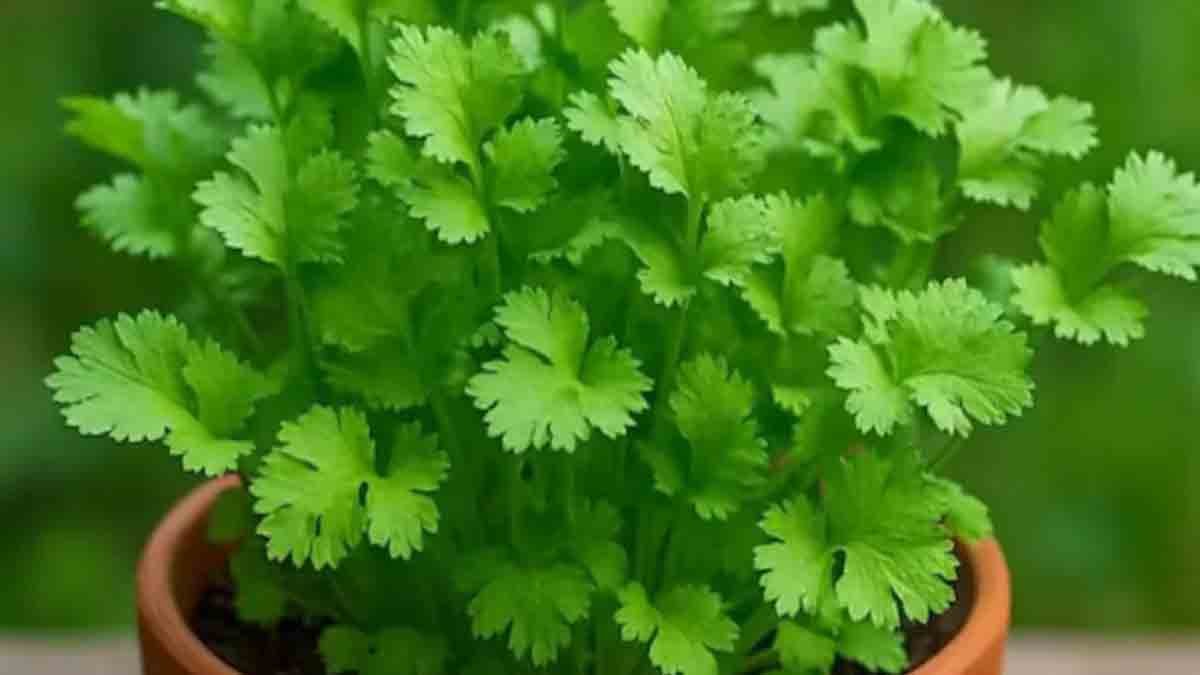Coriander—also known as cilantro—is one of the most essential herbs in every Indian kitchen. Whether you’re cooking vegetables, curries, or lentils, a sprinkle of fresh coriander adds flavor, aroma, and beauty to every dish.
The best part? You can grow this flavorful herb right at home! Growing coriander in your kitchen garden ensures a daily supply of fresh, fragrant, and chemical-free leaves. Plus, it’s an incredibly easy plant to maintain—requiring very little space, money, and effort.
In this complete guide, we’ll share expert-backed steps on how to grow coriander at home successfully, along with care, watering, and harvesting tips that follow sustainable and organic methods.
Step-by-Step Guide to Growing Coriander at Home
1. Choosing the Right Soil
Healthy soil is the foundation of every good harvest. Coriander thrives best in loamy soil that is rich in organic matter and drains well.
Ideal Soil Mix:
- 70% garden soil
- 20% cow dung or organic compost
- 10% sand for better drainage
Avoid waterlogging, as coriander roots can rot if the soil stays soggy.
2. Choosing the Perfect Location
Coriander plants love sunlight but dislike excessive heat. Choose a spot that gets at least 4–5 hours of direct sunlight daily.
Good options include:
- A sunny balcony or terrace
- A window ledge that receives bright light
If you’re planting during summer, choose a partially shaded area to protect young plants from harsh sunlight.
3. Preparing Coriander Seeds
Coriander seeds are unique because each seed is actually two seeds stuck together. For faster germination:
- Gently crush the seeds to split them into halves.
- Soak them in lukewarm water for 6–8 hours.
- Drain and dry lightly before sowing.
This simple preparation step increases the success rate of germination.
Sowing the Seeds
- Take an 8–10 inch deep pot or tray.
- Fill it with the prepared soil mixture.
- Lightly sprinkle water to moisten the surface.
- Spread the soaked seeds evenly.
- Cover them with a 1 cm layer of soil.
- Place the pot in a sunny, well-ventilated area.
Best Time to Sow:
October to February is ideal, though coriander can also grow in partial shade during summer months.
Watering Tips
Coriander needs consistent moisture but should never be overwatered.
- Keep the soil slightly moist during germination.
- Water lightly once daily using a spray bottle in the morning or evening.
- Avoid stagnant water to prevent root rot.
Tip: Always check the top layer of soil—if it feels dry, it’s time to water.
Germination and Plant Care
- Seeds usually sprout within 7–10 days.
- When seedlings grow 2–3 inches tall, thin out crowded plants to allow space for healthy growth.
- Add organic compost or vermicompost every 15 days to encourage lush leaves.
- Use neem oil spray to naturally protect plants from pests and fungal infections.
Regular care ensures steady, green growth and multiple harvests from the same batch of plants.
Harvesting Fresh Coriander
- The first harvest is ready in 25–30 days after sowing.
- Use scissors to cut the leaves, leaving the roots intact.
- Continue watering and fertilizing lightly—new leaves will regrow in a few days.
- You can usually harvest 3–4 times from one batch of seeds.
This makes coriander one of the most cost-effective and rewarding herbs to grow at home.
Expert Tips for Growing Coriander Successfully
- Always soak seeds before sowing for faster germination.
- Avoid overwatering—too much moisture can cause root rot.
- Stick to organic manure and avoid chemical fertilizers.
- If space is limited, use recycled containers like plastic bottles or trays.
- After each harvest, mix fresh compost into the soil to rejuvenate nutrients.
Benefits of Growing Coriander at Home
- Enjoy fresh, aromatic leaves anytime.
- 100% chemical-free and organic produce.
- Adds natural greenery and beauty to your home.
- Low cost, high yield gardening option.
- Provides a healthy herb for daily cooking and garnishing.
If you’ve ever wanted to start your own kitchen garden, coriander is the perfect place to begin. It’s easy, rewarding, and fills your home with the refreshing scent of green herbs.
With just a little sunlight, care, and love, you can enjoy lush, flavorful coriander leaves all year round. Not only does it add zest to your meals, but it also brings the joy of sustainable living right to your kitchen.
Also Read-10 Life-Changing Chanakya Niti Lessons: How to Rise Stronger After Every Failure









